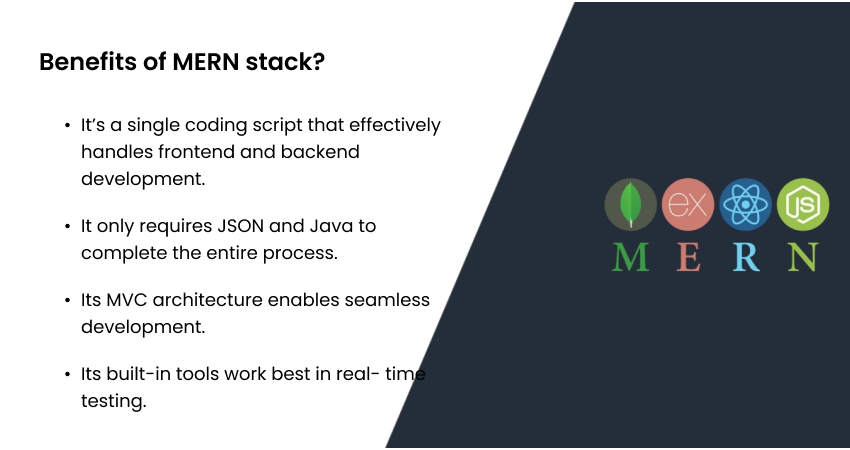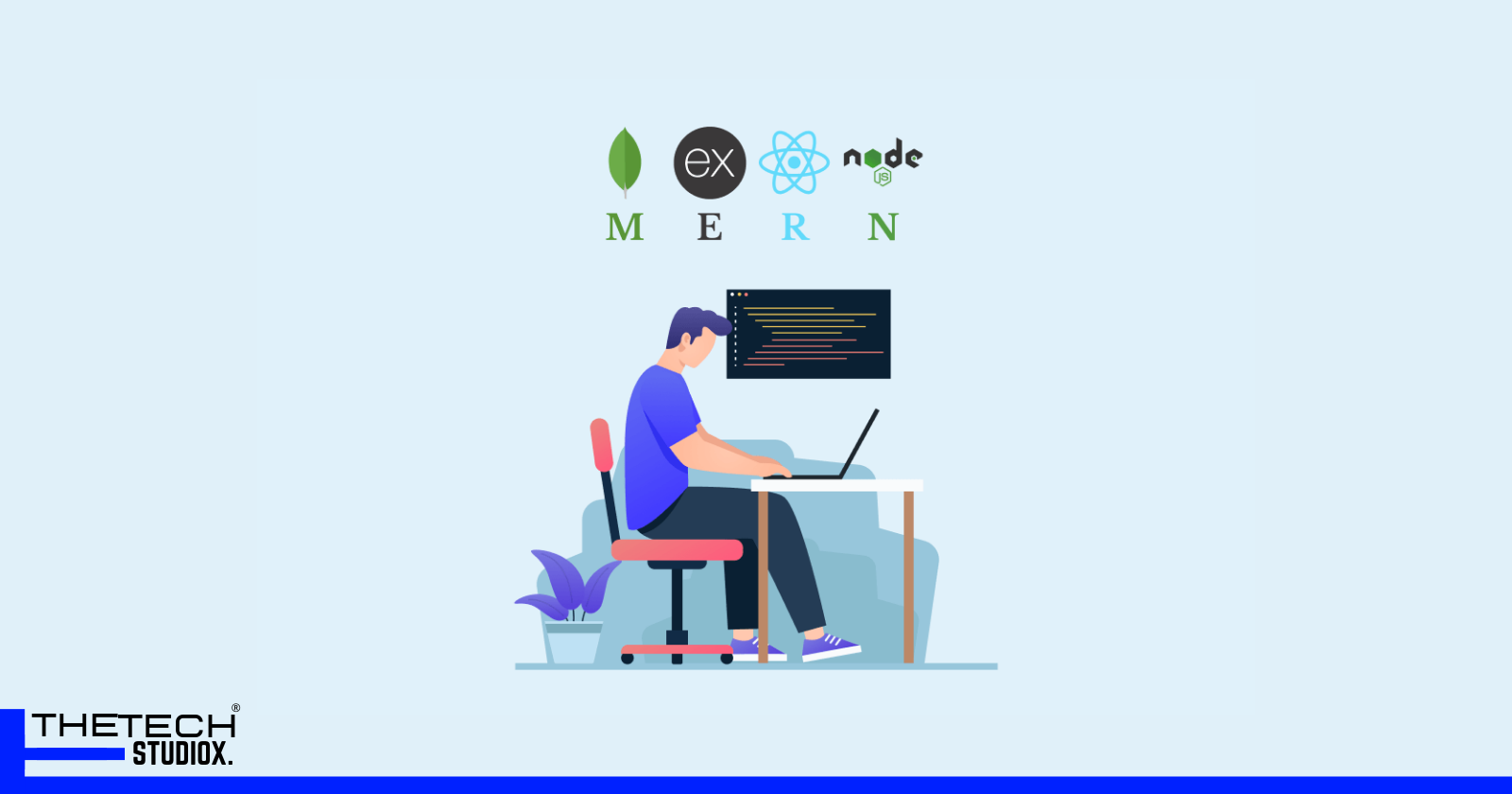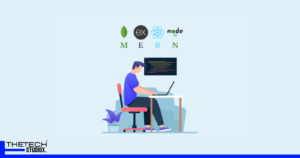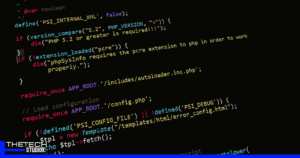Table of Contents
Introduction to MERN stack
As a web developer, I am always on the lookout for new technologies and frameworks that can enhance my productivity and take my projects to the next level. One such technology that has caught my attention is the MERN stack. MERN stands for MongoDB, Express.js, React.js, and Node.js. In this article, I will introduce you to the components of the MERN stack and delve into the various advantages it offers for web development.
The components of the MERN stack
The MERN stack is composed of four powerful technologies that seamlessly work together to create robust web applications. Let’s take a closer look at each component:
MongoDB: MongoDB is a NoSQL database that stores data in a flexible, JSON-like format called BSON (Binary JSON). It allows for easy and efficient data storage and retrieval, making it an ideal choice for web applications that deal with large amounts of data.
Express.js: Express.js is a fast and minimalist web application framework for Node.js. It provides a simple yet powerful set of features for building web applications, such as routing, middleware support, and template engines. With Express.js, developers can quickly create scalable and efficient server-side applications.
React.js: React.js is a JavaScript library for building user interfaces. It allows developers to create reusable UI components that update efficiently and reflect the changes in data. React.js follows a component-based architecture, which makes it easier to build complex UIs and maintain code reusability.
Node.js: Node.js is a JavaScript runtime built on the V8 engine. It enables developers to run JavaScript code on the server-side, opening up possibilities for building scalable and high-performance web applications. With Node.js, developers can handle multiple client requests concurrently, resulting in faster response times.
Advantages of MERN stack for web development
Now that we have a basic understanding of the components of the MERN stack, let’s explore the advantages it offers for web development.

Improved productivity with the MERN stack
One of the key advantages of using the MERN stack is the improved productivity it brings to the development process. Since all the components of the stack are written in JavaScript, developers can use a single language throughout the entire development cycle. This eliminates the need to switch between different programming languages and reduces the learning curve for developers. It also allows for code reuse, as developers can share code between the client-side and server-side, further speeding up the development process.
Additionally, the MERN stack provides a rich ecosystem of tools, libraries, and frameworks that enhance productivity. For example, React.js comes with a powerful set of developer tools that enable efficient debugging and performance optimization. Express.js provides a wide range of middleware and plugins that simplify common tasks, such as authentication and input validation. These tools, combined with the modular nature of the MERN stack, enable developers to build web applications faster and with fewer lines of code.
Enhanced performance and scalability
Another advantage of using the MERN stack is the enhanced performance and scalability it offers. Since the MERN stack is built on JavaScript, it leverages the asynchronous nature of Node.js to handle multiple client requests concurrently. This results in faster response times and better performance, especially for applications that require real-time updates or handle a large number of concurrent users.
Moreover, MongoDB, the database component of the MERN stack, is designed to scale horizontally. It allows for the distribution of data across multiple servers, enabling web applications to handle increasing loads without sacrificing performance. Combined with the server-side rendering capabilities of React.js, which ensure faster initial page load times, the MERN stack provides a solid foundation for building high-performance and scalable web applications.
Simplified development process with MERN stack
The MERN stack simplifies the development process by providing a unified and consistent approach to web development. With the MERN stack, developers can seamlessly switch between client-side and server-side development, as both components use JavaScript. This allows for better collaboration between frontend and backend developers, resulting in smoother project workflows and reduced communication overhead.
Moreover, the MERN stack follows a modular and component-based architecture, which makes it easier to manage and maintain code. Developers can build reusable UI components with React.js and organize their code into separate modules with Node.js and Express.js. This improves code maintainability and makes it easier to add new features or make changes to existing ones.
Seamless integration and full-stack capabilities
One of the standout advantages of the MERN stack is its seamless integration between the different components. Since all the components are written in JavaScript, they can be easily integrated and work together flawlessly. This allows for a smooth development experience and reduces the time and effort required for integration testing.
Furthermore, the MERN stack provides full-stack capabilities, meaning developers can build both frontend and backend components of a web application using the same technology stack. This eliminates the need for separate teams or developers with different skill sets, as a single developer can handle the entire web development process. This not only streamlines the development process but also reduces costs and improves the overall efficiency of the project.
MERN stack vs other web development stacks
While the MERN stack offers numerous advantages for web development, it’s important to consider how it compares to other web development stacks. Let’s take a brief look at some popular alternatives to the MERN stack:
MEAN stack: The MEAN stack is similar to the MERN stack, with the only difference being the use of Angular.js instead of React.js for the frontend. While both stacks have their strengths, React.js is known for its performance, scalability, and ease of use, making the MERN stack a preferred choice for many developers.
LAMP stack: The LAMP stack consists of Linux, Apache, MySQL, and PHP. It has been a popular choice for web development for many years. However, the LAMP stack is known for its monolithic architecture and can be less flexible and scalable compared to the MERN stack.
Django stack: The Django stack is based on Python and is known for its simplicity and ease of use. However, it may not offer the same level of performance and scalability as the MERN stack, especially for applications that require real-time updates or handle a large number of concurrent users.
While each stack has its own advantages and use cases, the MERN stack stands out for its flexibility, performance, and full-stack capabilities, making it a powerful choice for modern web development.
Examples of successful projects built with MERN stack
To showcase the power and versatility of the MERN stack, let’s take a look at some examples of successful projects that have been built using this technology stack:
Facebook: Facebook’s Ads Manager, a platform for managing and optimizing ad campaigns, is built using the MERN stack. The MERN stack provides the performance, scalability, and real-time capabilities required to handle the massive amounts of data and user interactions on the platform.
Netflix: Netflix’s content management system is built using the MERN stack. The MERN stack allows for efficient data storage and retrieval, as well as seamless integration between the frontend and backend components of the system. This enables Netflix to deliver a smooth and personalized user experience to its millions of subscribers.
Airbnb: Airbnb’s search and booking platform is built using the MERN stack. The MERN stack provides the performance, scalability, and real-time capabilities required to handle the high volume of search queries and bookings on the platform. It also allows for seamless integration with third-party services, such as payment gateways and mapping APIs.
These examples demonstrate the wide range of applications that can be built using the MERN stack and highlight its ability to handle complex and demanding web development projects.
Conclusion
The MERN stack is a powerful and versatile technology stack that offers numerous advantages for web development. From improved productivity and enhanced performance to simplified development processes and seamless integration, the MERN stack provides a solid foundation for building modern web applications.
Whether you are a frontend developer looking to enhance your UI development skills or a backend developer seeking a full-stack solution, the MERN stack has something to offer. Its flexible and modular architecture, combined with the power of JavaScript, makes it a preferred choice for many developers and companies.
So, if you are looking to unleash the power of the MERN stack and take your web development skills to new heights, I highly recommend diving into this technology stack and exploring its endless possibilities. Happy coding!




